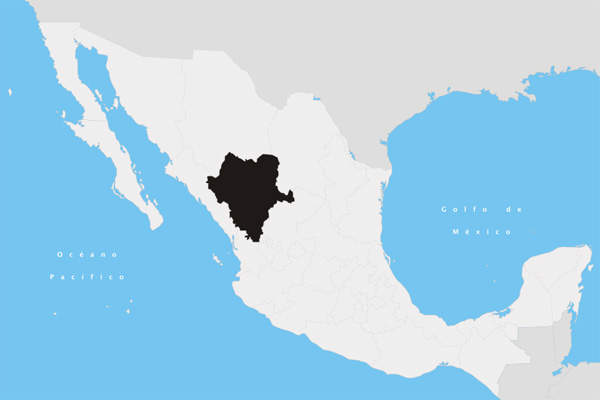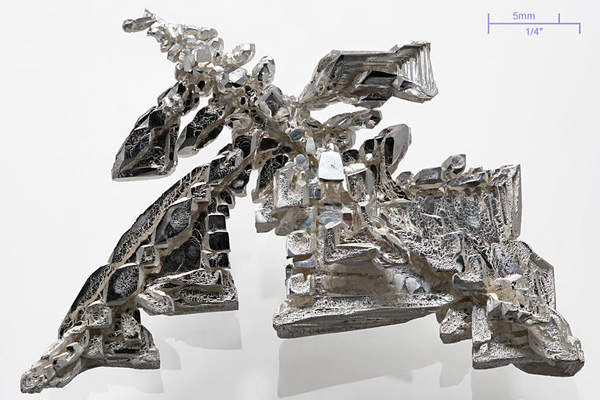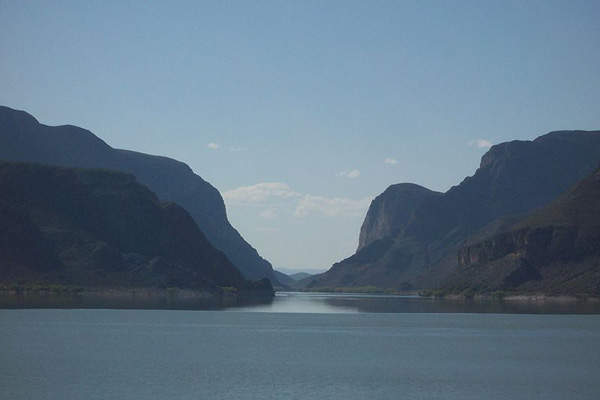The Pitarrilla project is a silver, lead and zinc mine located approximately 160km north-north-west of Durango City in the state of Durango, Mexico. The mine is estimated to contain 479 million ounces (Moz) of silver reserves, making it the fourth biggest silver mine in the world.
The project’s feasibility study was completed in December 2012. The mine is estimated to produce 333Moz of silver, 582 million pounds (Mlb) of lead and 1,669Mlb of zinc over its 32-year mine life. It is expected to produce 15Moz of silver a year during the initial 18 years.
Silver Standard Resources owns the mine through its Mexican subsidiary Silver Standard Durango. The start of operations and other operational decisions are yet to be finalised.
Pitarrilla mine geology and mineralisation
Related content
San Dimas Gold-Silver Mine Expansion, Mexico
The San Dimas gold-silver mine in Durango, Mexico, is owned by Primero Mining.
The Pitarrilla polymetallic mine, discovered in 2002, is based within the municipality of Inde and comprises two ore types, direct leach ore and flotation / leach ore. It consists of a large, open-pit filled with oxidised ores in the outer portion and sulphide ores in the deeper parts of the deposit.
The silver-lead-zinc deposit is located on the eastern flank of the Sierra Madre Occidental mountain range in the central part of Durango. It is hosted by bent Cretaceous marine sediments and inconsistently overlying Eocene and Oligocene volcanics and intrusives.
Most of the mineralisation is contained within the Central Mexican Silver Belt, a metallogenic province. The mineralisation occurs as a vertically stacked system concentrated on rhyolitic dykes and sills.
Sulphide-associated mineralisation is settled in the basement Cretaceous sedimentary strata and is represented by an aerially limited but vertically extended zone of disseminated and veinlet gold-zinc-lead (copper-asbestos-antimony) sulphide mineralisation and strata-bound massive replacement mineralisation.
Silver, lead and zine ore reserves
The mine is estimated to contain 1,014Mlb of lead grading at 0.29% and 2,722Mlbs of zinc grading at 0.79%. Probable mineral reserves at the mine are estimated to be 479Moz of silver.
Mining and processing at Pitarrilla
Pitarrilla open pit will be mined using a conventional truck and shovel operation. It will be mined in five phases, namely Breccia Ridge, Peña Dike, Cordon Colorado, Javelina Creek and South Ridge.
The mining plan includes the haulage of 157Mt of ore over the mine life. The ore will be prepared by the processing plant using flotation and leach processing to produce silver and lead-zinc concentrates.
The plant is estimated to produce approximately 604,000t of lead concentrate and approximately 1.5Mt of zinc concentrates using flotation circuits during its lifetime. The leach circuit is expected to produce 118.5Moz of silver in silver-rich doré bars.
It will employ a common crushing and grinding circuit for the two ore types. The ball milling circuit will have a processing capacity of 12,000t a day of direct leach ore and 16,000t a day of flotation / leach ores.
Highly oxidised ore will be directly leached in an agitated leach circuit. From the resulting leach solution, silver will be extracted as doré bars using the Merrill-Crowe process. The less oxidised and unweathered sulphide ore will be processed in lead and zinc flotation circuits, resulting in the production of separate silver-bearing lead and zinc concentrates.
Tailings from the flotation circuits will be processed in the agitated leach circuit to recover additional silver.
The silver doré product will be sold to local smelters, while the lead and zinc concentrates will be sold in the global market to offshore smelters.
Pitarrilla mine infrastructure facilities
The Pitarrilla mine development includes the construction of a starter dam for the tailings storage facility, access roads, modifications for the existing roadways and buildings and camp facilities.
The mine will be accessed through a 47km-long primary road while a 36.7km-long existing, unpaved public road north from Highway 45 will be upgraded to access the mine. A 150m-long permanent concrete bridge over the Nazas River will also be constructed to access the mine.
Comisión Federal de Electricidad (CFE), Mexico’s national transmission utility, will supply the power required for the mining project. It is proposed to supply power in two stages, which include an initial 17MW from CFE’s existing Nuevo Ideal substation and the final 40MW upgrade from the Canatlán substation that is under construction.
Freshwater required by the mine will be sourced from a booster station, which collects water from the nearby well field. The water will be transported from the booster station to the mine’s water storage tank through an 11km-long pipeline to be located along the main access road to the site.
Contractors involved with the Pitarrilla mine development
M3 Engineering and Technology and Silver Standard’s development team together prepared the feasibility study of the Pitarrilla project.






